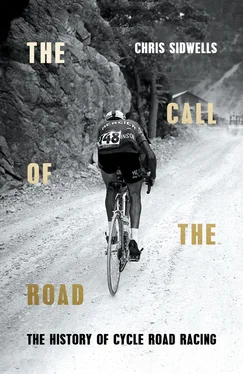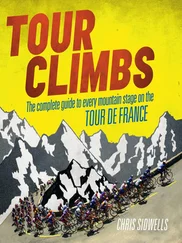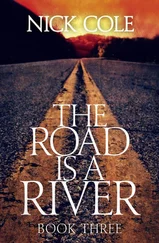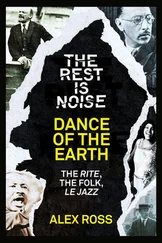1 ...7 8 9 11 12 13 ...22 But still not willing to make life easy for his new rival, three years after L’Auto-Vélo was launched, Giffard instituted proceedings in the courts that forced it to drop the word vélo from its title. Giffard won, and L’Auto-Vélo had to call itself L’Auto from then on. The newspaper covered many new and adventurous pursuits, but focused on cycling, and now its title said it was about cars. Circulation hadn’t been great since it was founded, so how would it hold up in future? Desgrange needed a marketing plan to cement L’Auto ’s association with cycling, the sport people were interested in.
He tried printing the words ‘Motoring and Cycling’ underneath ‘L’Auto’, like a sub-heading to help reveal the paper’s content. He also listed on the front page other adventurous pursuits L’Auto covered, but it was a bit clumsy. With sales falling and his advertisers taking their custom elsewhere, Desgrange needed a big gesture. He needed something that would link L’Auto in people’s minds with cycling for the foreseeable future.
The pressure was on, but then Giffard cranked things up by goading Desgrange in print. Desgrange was furious and called his staff together, telling them they needed to come up with something that would switch attention from Le Vélo to L’Auto . ‘We need to do something big, a big promotion. Something that will nail Giffard’s beak shut,’ he is reported to have said.
Géo Lefèvre was a young reporter who covered cycling and rugby, as well as taking part in both sports. He’d worked for Le Vélo , but Desgrange convinced him that he’d be better off with him. Now, though, Lefèvre had his back against the same wall as Desgrange. Giffard was unlikely to re-employ Lefèvre if L’Auto went under. Maybe Desgrange realised that, because he took Lefèvre out to lunch and asked him what he thought they could do.
The story goes that Lefèvre suggested promoting a six-day cycle race on the road. Six-day races on the track, although popular in Britain and America, were not yet so in France, but this was never-know-until-you-try time for L’Auto . Lefèvre suggested the route should be in the shape of a hexagon, the same shape as the outline of France. There are other versions of what happened at that meal too, and Lefèvre himself was always vague about it. Later, when the Tour de France was part of French life, he said in at least one interview that he only suggested a lap of France for want of something better to say when Desgrange asked him.
A lap of France, a Tour de France, already existed, and it was part of life in the centre of the country. It was a rite of passage for apprentices. The tradition began in Provence and Languedoc, where boys who wanted to learn a trade went between towns around the edges of the Massif Central. Each boy was sponsored by the trade guild he wanted to join. In each town they learned different aspects of that trade, and were looked after by women called guild mothers – not always very well. It was a rough life.
There were other precedents. For example, there’d already been a motor-racing Tour de France in 1899, but Desgrange still wasn’t sure. It couldn’t be done in one go with the clock running and the riders resting only when they had to, as they did in the six-day track races or Paris–Brest–Paris. The race would have to be broken into stages. Desgrange appears to have only made up his mind when L’Auto ’s company accountant, Victor Goddet, got behind the prospect. If the guy who controlled the money thought the Tour de France made sense, then maybe it did. So in late January 1903 Desgrange wrote in L’Auto , ‘We intend to run the greatest cycling trial in the entire world. A race more than a month long; from Paris to Lyon, then to Marseille, Toulouse, Bordeaux, Nantes and back to Paris.’
Desgrange wanted a big spectacle, a route right around the outside of France. He said the race would be broken into different legs, or stages, and run over five weeks from the end of May until 5 July. Spacing the race out like that would give ample time to recover between each leg, and maybe Desgrange thought it would maintain interest for longer, but it was too long a period for any but the top professionals to commit to. It was also probably too long to hold the public’s interest. Above all, Desgrange needed his spectacle to have mass appeal, so he needed lots of racers to provide the stories to report on. To attract more entrants he cut the duration, but not the distance, to just under three weeks.
He also put the dates back, so the Tour de France ran at the same time as what would become a growing feature of French life, the country’s annual two-week holiday. That was a great decision, and would be one of the reasons for the Tour’s success. It came to mean summer in France, the holidays and happy memories, and that helped the race grow.
The first Tour de France was 2,428 kilometres long, split into six stages, with between two and four days separating each one. The shortest stage was 268 kilometres and the longest 471 kilometres. The long gaps between stages helped stragglers finish and still get some rest. And, going against the trend of other road races of the day, no competitors, professional or amateur, were allowed to have pacers. They had to make their own way around the route with no outside help.
Seventy-nine entered, a mix of professionals and weekend warriors, and sixty of them took the start outside the Réveil-Matin café in Montgeron at three o’clock in the afternoon of 1 July 1903. The café is still there, on the Rue Jean-Jaurès, and a little plaque outside records the event. The favourites for victory were Maurice Garin and Hyppolite Aucouturier. Garin had won the 1897 and 1898 Paris–Roubaix, and the second edition of Paris–Brest–Paris in 1901, which was the biggest road race in the world before the Tour de France. Garin had also won Bordeaux–Paris in 1902, while the younger man, Aucouturier, was the rising star, having won Paris–Roubaix earlier in 1903.
On the morning of the first stage Henri Desgrange wrote in his editorial: ‘With the broad and powerful swing of the hand which Zola in La Terre [The Earth] gave to his ploughman, L’Auto , newspaper of ideas and action, is going to fling across France today those reckless and uncouth sowers of energy who are the great professional riders of the road.’ Desgrange continued writing like that for the rest of his life.
Garin won the first stage, riding 467 kilometres from Paris to Lyons in 17 hours 45 minutes and 13 seconds, at an average speed of 26 kilometres per hour. Emile Pagie was just under a minute behind him, and the rest were spread out behind the first two. The last rider, Eugène Brange, took more than 38 hours to reach Lyons. Twenty-three riders didn’t get there, including Aucouturier, who dropped out with stomach cramps. He was allowed to contest the next stage, which he won, although he was removed from the overall standings.
Although the 1905 Tour de France is often referred to as the first to venture into the mountains, when it went to the Vosges and climbed over the Ballon d’Alsace, there were low mountain passes in the first Tour de France in 1903. There was one on the first stage. Not far from Lyons the riders scaled the 712-metre (2,335-ft) Col des Echarmeaux. Then on the next stage, from Lyons to Marseilles, there was a longer and slightly higher climb, the Col de la République, just south of St Etienne. Aucouturier broke away on its slopes with Léon Georget to win the 374-kilometre stage to Marseilles, while Garin stayed close enough to preserve his lead.
Garin won two more stages to round off the first Tour de France, winning 6,000 gold francs, the equivalent to nine years’ earnings for a miner from Lens in the north of France, where Garin lived. The French tax rate in 1903 was less than 10 per cent. So the Tour de France set Maurice Garin up quite nicely, and it did wonders for the sales of L’Auto .
Читать дальше












